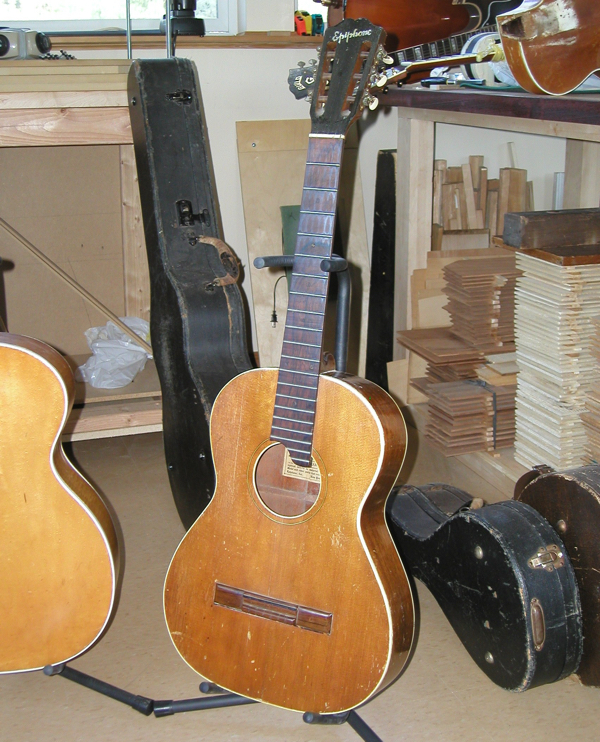
Close-up #34: 1938 Seville SN 14365
The guitar featured here looks pretty different from the typical Epiphone archtops and flattops – more like a classical guitar. (Thanks, Tony, for providing these photos!)
The internal "Masterbilt" type label bears the printed serial number "14365" – indicating a production date of late 1938 to early 1939. And next to it a typed model name: "TORES-SEVILLE". Now, what's that supposed to mean?
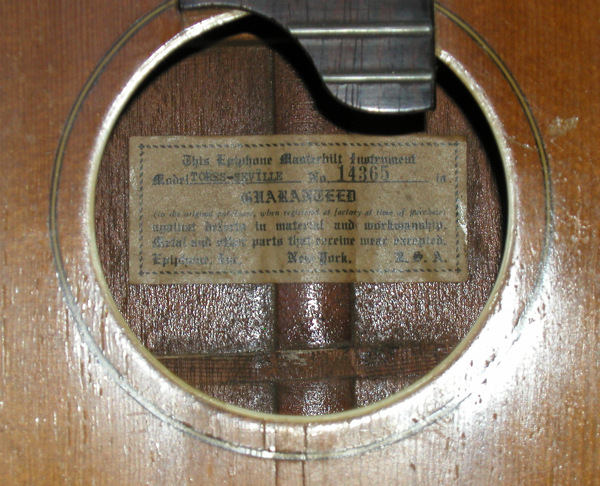
Epiphone's 1939 catalog listed three "gut string guitar models: "Concert", "Alhambra" and "Seville". According to a source, Epiphone had announced their gut string model line in November 1938 (Tom Wheeler, "American Guitars", 1982, p30).
The Seville was the low-end model priced at $65 including case. And the catalog picture and description match up with the example shown here. But why "TORES-SEVILLE" on the label?
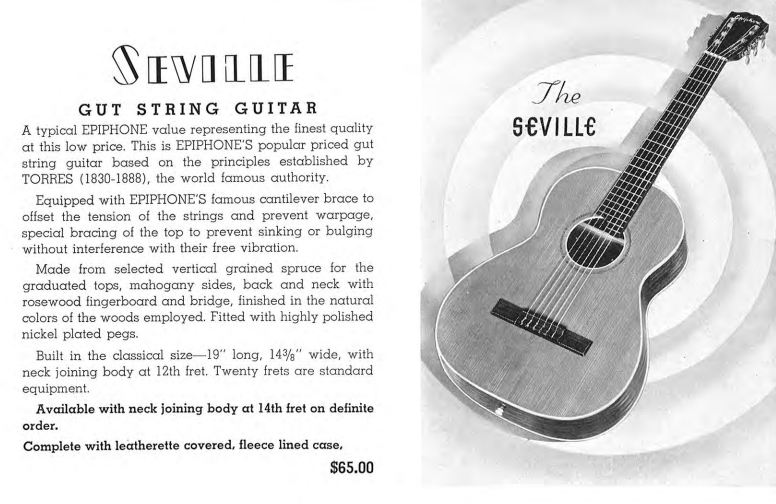
The catalog blurb explains: "This is EPIPHONE'S popular priced gut string guitar based on the principles established by TORRES (1830-1888), the world famous authority".
Now the penny drops: Obviously the blurb refers to Antonio de Torres (1817-1892), the Spanish luthier who created and refined the guitar design which was to become the standard for the modern "Spanish" classical guitar.
However somewhat strangely, "TORRES" was misspelt "TORES" on the label, and Torres' birth and death year quoted in the catalog seem to be inaccurate ...
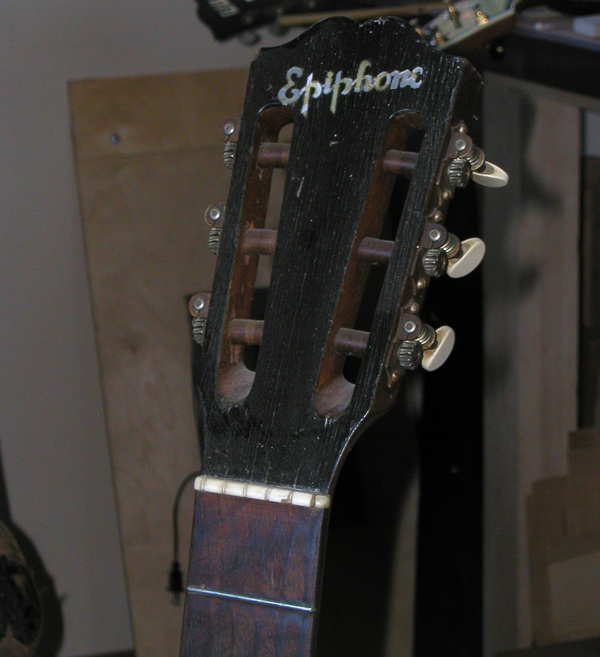
The headstock with inlaid pearl logo is of the slotted type, with a "center-dip" top shape that hadn't been used on Epis since the introduction of the Masterbilt line, but had been present on their early 1930s line of roundhole guitars – which was actually called "Seville", too!
Epiphone apparently loved to name some models after Spanish places, see also "Madrid" and "Navarre" – although these models were often sold set up as Hawaiian(!) guitars ...
By the way: The center-dip headstock shape became standard on all Epiphone acoustic instruments just after this Seville was built – replacing Epiphone's trademark asymmetric and rounded peak headstocks of earlier years.
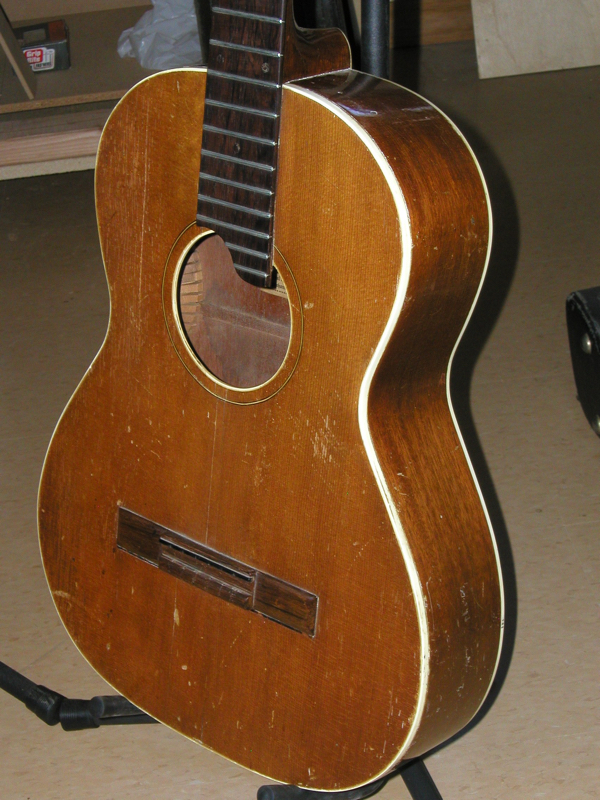
This Seville has typical gut-string guitar features such as a tie-on bridge and a 12-fret neck – although the catalog offered a 14-fret neck option for these gut-string models on definite order! The back and sides are mahogany. Note the treble-side fretboard extending into the soundhole!
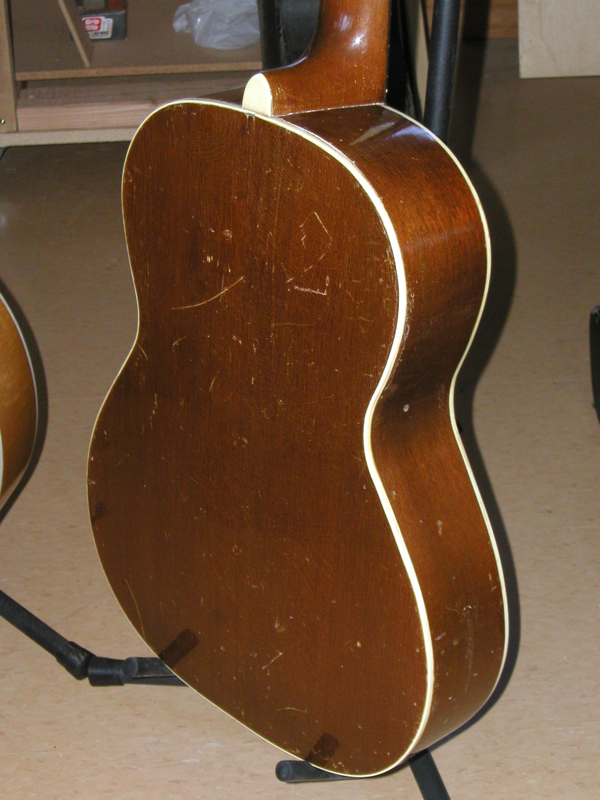
Addition March 31, 2017: The owner of the guitar sent us some internal photos showing the top bracing pattern which appears to be an interesting variation of Torres' famous "fan-strutting" design.
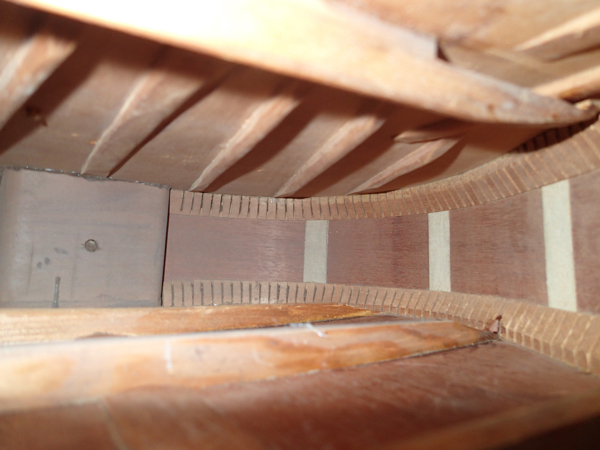
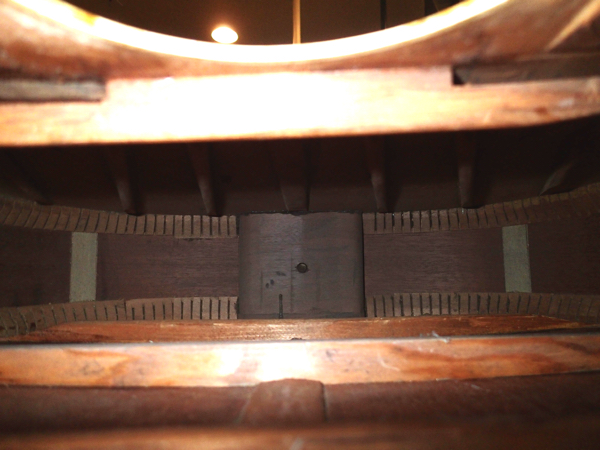
Epiphone's excursion into the gut-string guitar world seems to have been rather unsuccessful and short-lived. A letter dated August 18, 1941 sent to Epiphone dealers stated: "We are discontinuing the Gut String Guitars as there isn't a sufficient market for this type of instrument in the Epiphone price range" (source: Fisch/Fred 1996, p165).
(Jan 29, 2017)